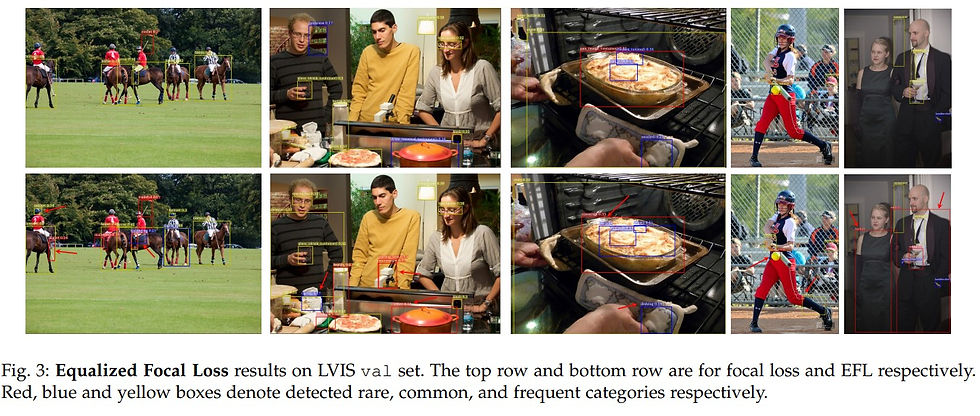Better rare object recognition by balancing gradients with EFL
- morrislee

- Oct 13, 2022
- 1 min read
Better rare object recognition by balancing gradients with EFL
The Equalization Losses: Gradient-Driven Training for Long-tailed Object Recognition
arXiv paper abstract https://arxiv.org/abs/2210.05566v1
arXiv PDF paper https://arxiv.org/pdf/2210.05566v1.pdf

... Due to the extremely small ratio of instances, tail categories often show inferior accuracy.
... find such performance bottleneck is mainly caused by the imbalanced gradients, which can be categorized into two parts: (1) positive part, deriving from the samples of the same category, and (2) negative part, contributed by other categories.
... observed that the gradient ratio of accumulated positives to negatives is a good indicator to measure how balanced a category is trained.
... come up with a gradient-driven training mechanism to tackle the long-tail problem: re-balancing the positive/negative gradients dynamically according to current accumulative gradients, with a unified goal of achieving balance gradient ratios.
... introduce a new family of gradient-driven loss functions, namely equalization losses.
... method consistently outperforms the baseline models, demonstrating the effectiveness and generalization ability of the proposed equalization losses ...
Please like and share this post if you enjoyed it using the buttons at the bottom!
Stay up to date. Subscribe to my posts https://morrislee1234.wixsite.com/website/contact
Web site with my other posts by category https://morrislee1234.wixsite.com/website




Comments